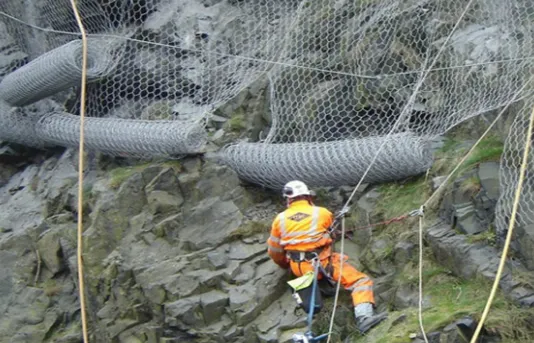-
 Phone:
Phone: -
 Email:
Email:

Affordable Rockfall Netting Solutions for Effective Landslide Prevention and Safety Measures
Understanding Rockfall Netting Prices A Comprehensive Overview
Rockfall netting is an essential component in modern engineering aimed at stabilizing slopes and preventing rockfalls which can pose significant risks to infrastructure, roads, and human life. As urban development continues, the demand for effective solutions to manage geological hazards has risen. One fundamental aspect that stakeholders need to consider is the pricing of rockfall netting systems. This article will provide an overview of the factors influencing rockfall netting prices, the types of netting available, and the importance of proper installation.
Factors Influencing Rockfall Netting Prices
1. Material Quality The primary driver of rockfall netting prices is the quality of materials used. High-tensile steel wire nettings are typically more expensive than standard wire nettings due to their enhanced strength and durability. Additionally, the use of galvanized or PVC-coated wires can increase resistance to corrosion, thereby extending the lifespan of the netting but at a higher cost.
2. Netting Design and Specifications Various designs accommodate different environmental conditions and risk levels. For instance, a dense mesh netting designed to catch small rocks may be pricier than a typical netting intended for larger boulders. Moreover, customized solutions tailored to specific site conditions often come with a premium due to the engineering expertise required.
3. Installation Costs While purchasing high-quality netting is vital, installation costs can significantly affect the overall budget. Installing rockfall netting involves specialized equipment and trained personnel, which can increase labor costs. The difficulty of the terrain can also influence installation expenses, with steeper slopes posing greater challenges and requiring more sophisticated techniques.
4. Size of the Area Covered The price of rockfall netting systems typically scales with the size of the area that needs protection. Larger areas require more netting material, hardware, and labor, thus increasing the overall price. It is essential for project managers to perform thorough site assessments to determine the extent of netting required.
5. Project Location Geographic location can also influence pricing. Transportation costs for materials and the availability of skilled labor can vary greatly depending on the region. In remote or hard-to-access areas, the costs might rise significantly due to logistics and additional efforts required for transportation.
rockfall netting price

Types of Rockfall Netting
There are several types of rockfall netting systems available on the market, each tailored for specific applications and environments. Common types include
- Flexible Netting This is designed to deform upon impact, absorbing energy from falling rocks and redistributing the force throughout the system. - Semi-Rigid Netting Combining flexibility and strength, semi-rigid systems offer increased resistance to rock impacts with moderate flexibility. - Barrier Systems These are designed to contain rockfalls entirely, often utilizing a combination of netting and barriers or fencing to provide a comprehensive solution.
Importance of Professional Installation
Proper installation of rockfall netting is crucial in ensuring its effectiveness. Engaging experienced professionals not only guarantees that the netting is anchored and tensioned correctly but also adheres to local regulations and safety standards. This step can significantly impact the longevity and performance of the system, translating to cost savings over time by reducing the likelihood of failures that necessitate replacement or repairs.
Conclusion
Understanding rockfall netting prices is vital for making informed decisions about slope stabilization projects. By considering material quality, design specifications, installation costs, area size, and project location, stakeholders can better budget for this essential safety measure. Ultimately, investing in high-quality rockfall netting and professional installation can offer significant long-term benefits, protecting both infrastructure and lives from the hazards posed by unstable slopes.
-
Wire Mesh for Every Need: A Practical SolutionNewsJul.25,2025
-
Steel Fences: Durable, Secure, and Stylish OptionsNewsJul.25,2025
-
Roll Top Fencing: A Smart Solution for Safety and SecurityNewsJul.25,2025
-
Cattle Farm Fencing Solutions for Maximum SecurityNewsJul.25,2025
-
Affordable Iron Binding Wire SolutionsNewsJul.25,2025
-
Affordable Galvanized Wire SolutionsNewsJul.25,2025
-
Wire Hanger Recycling IdeasNewsJul.25,2025








